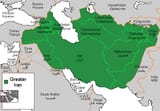Search Results
6/27/2025, 9:33:56 AM
ID: Nbet9i9w/pol/507946302#507950717
6/19/2025, 8:05:45 AM
>>507946302
>Greater Iran
The ancient Iranian peoples who emerged after the 1st millennium BC include the Alans, the Bactrians, the Dahae, the Khwarazmians, the Massagetae, the Medes, the Parthians, the Persians, the Sagartians, the Saka, the Sarmatians, the Scythians, the Sogdians, and likely the Cimmerians, among other Iranian-speaking peoples of West Asia, Central Asia, Eastern Europe, and the Eastern Steppe.
Modern Iranian peoples include the Baloch, the Gilaks, the Kurds, the Lurs, the Mazanderanis, the Ossetians, the Pamiris, the Pashtuns, the Persians, the Tats, the Tajiks, the Talysh, the Wakhis, the Yaghnobis, and the Zazas. Their current distribution spreads across the Iranian Plateau – stretching from the Caucasus in the north to the Persian Gulf in the south and from eastern Anatolia in the west to western Xinjiang in the east – covering a region that is sometimes called Greater Iran, representing the extent of the Iranian-speaking peoples and the reach of their geopolitical and cultural influence.
Richard Nelson Frye defines Greater Iran as including "much of the Caucasus, Iraq, Afghanistan, Pakistan and Central Asia, with cultural influences extending to China and western India."
According to him, "Iran means all lands and peoples where Iranian languages were and are spoken, and where in the past, multi-faceted Iranian cultures existed."
>Greater Iran
The ancient Iranian peoples who emerged after the 1st millennium BC include the Alans, the Bactrians, the Dahae, the Khwarazmians, the Massagetae, the Medes, the Parthians, the Persians, the Sagartians, the Saka, the Sarmatians, the Scythians, the Sogdians, and likely the Cimmerians, among other Iranian-speaking peoples of West Asia, Central Asia, Eastern Europe, and the Eastern Steppe.
Modern Iranian peoples include the Baloch, the Gilaks, the Kurds, the Lurs, the Mazanderanis, the Ossetians, the Pamiris, the Pashtuns, the Persians, the Tats, the Tajiks, the Talysh, the Wakhis, the Yaghnobis, and the Zazas. Their current distribution spreads across the Iranian Plateau – stretching from the Caucasus in the north to the Persian Gulf in the south and from eastern Anatolia in the west to western Xinjiang in the east – covering a region that is sometimes called Greater Iran, representing the extent of the Iranian-speaking peoples and the reach of their geopolitical and cultural influence.
Richard Nelson Frye defines Greater Iran as including "much of the Caucasus, Iraq, Afghanistan, Pakistan and Central Asia, with cultural influences extending to China and western India."
According to him, "Iran means all lands and peoples where Iranian languages were and are spoken, and where in the past, multi-faceted Iranian cultures existed."
Page 1

